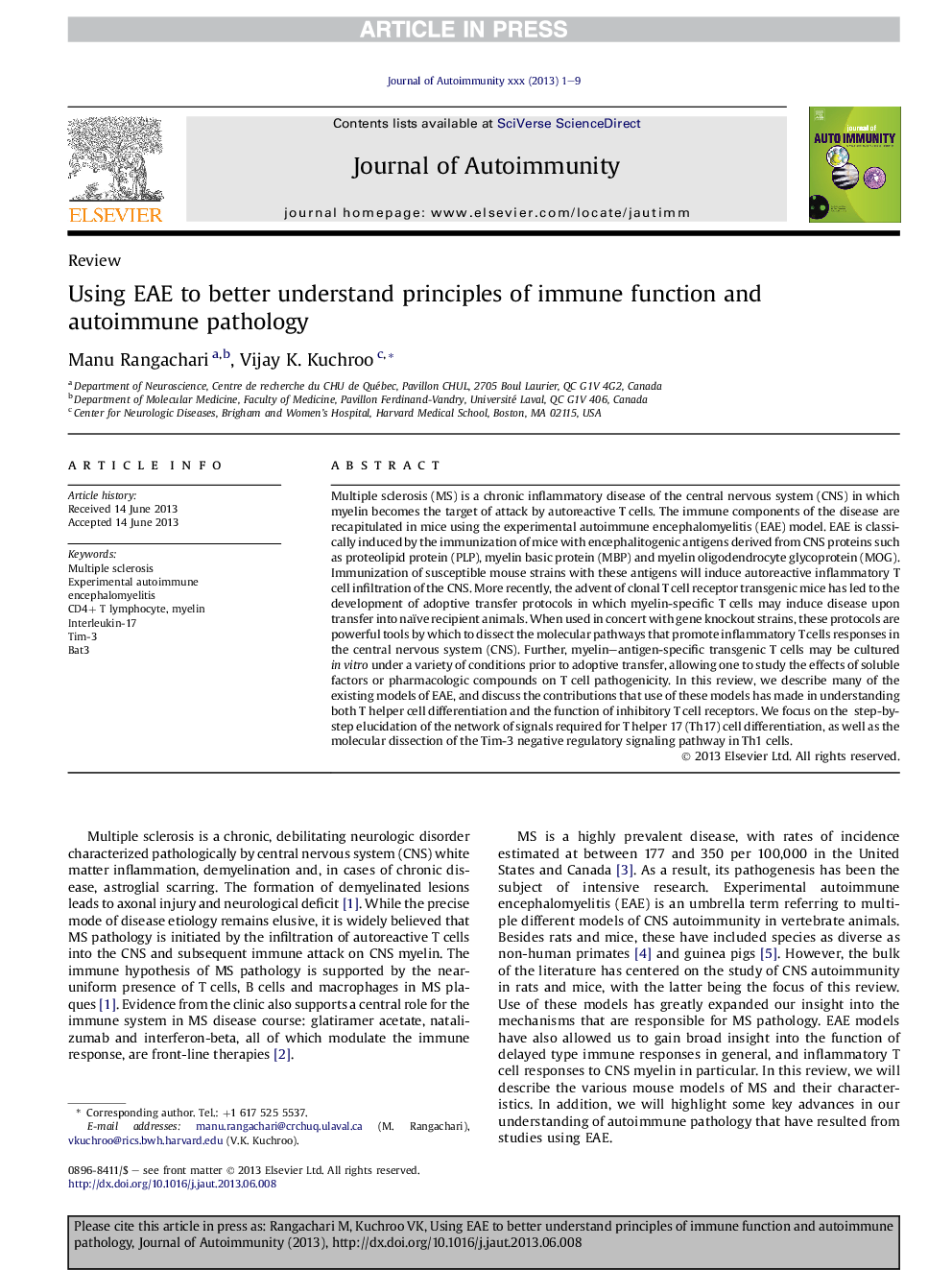| Article ID | Journal | Published Year | Pages | File Type |
|---|---|---|---|---|
| 6119318 | Journal of Autoimmunity | 2013 | 9 Pages |
Abstract
Multiple sclerosis (MS) is a chronic inflammatory disease of the central nervous system (CNS) in which myelin becomes the target of attack by autoreactive T cells. The immune components of the disease are recapitulated in mice using the experimental autoimmune encephalomyelitis (EAE) model. EAE is classically induced by the immunization of mice with encephalitogenic antigens derived from CNS proteins such as proteolipid protein (PLP), myelin basic protein (MBP) and myelin oligodendrocyte glycoprotein (MOG). Immunization of susceptible mouse strains with these antigens will induce autoreactive inflammatory T cell infiltration of the CNS. More recently, the advent of clonal T cell receptor transgenic mice has led to the development of adoptive transfer protocols in which myelin-specific T cells may induce disease upon transfer into naïve recipient animals. When used in concert with gene knockout strains, these protocols are powerful tools by which to dissect the molecular pathways that promote inflammatory T cells responses in the central nervous system (CNS). Further, myelin-antigen-specific transgenic T cells may be cultured in vitro under a variety of conditions prior to adoptive transfer, allowing one to study the effects of soluble factors or pharmacologic compounds on T cell pathogenicity. In this review, we describe many of the existing models of EAE, and discuss the contributions that use of these models has made in understanding both T helper cell differentiation and the function of inhibitory T cell receptors. We focus on the  step-by-step elucidation of the network of signals required for T helper 17 (Th17) cell differentiation, as well as the molecular dissection of the Tim-3 negative regulatory signaling pathway in Th1 cells.
Related Topics
Life Sciences
Immunology and Microbiology
Immunology
Authors
Manu Rangachari, Vijay K. Kuchroo,
